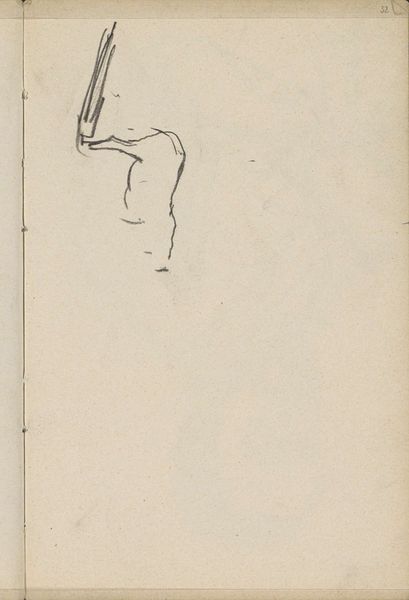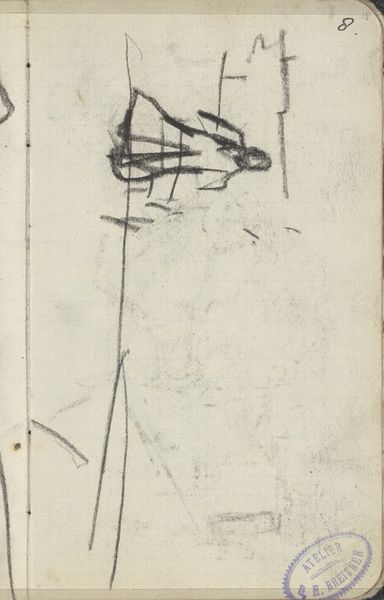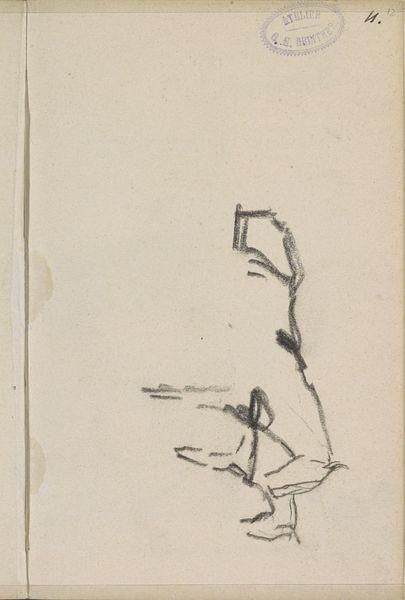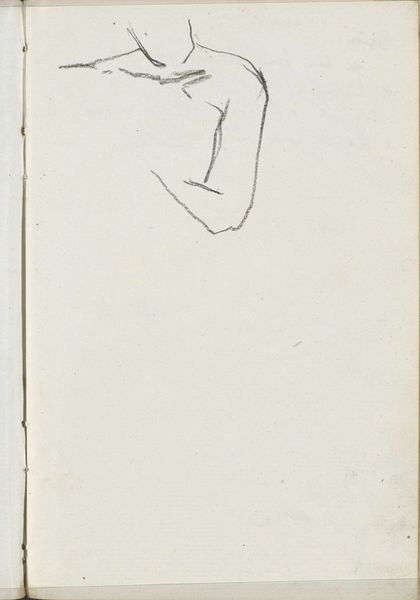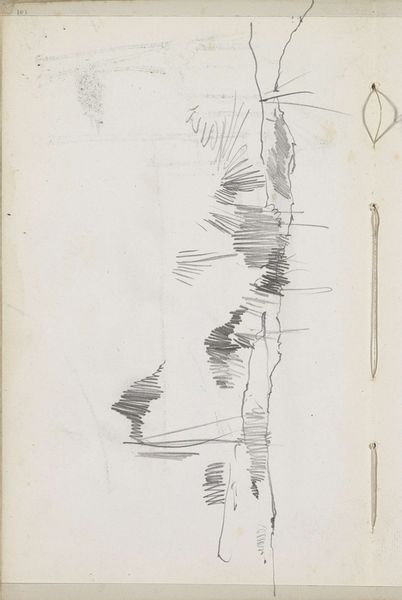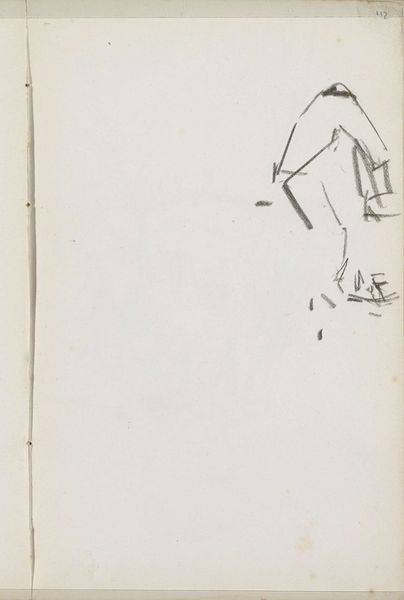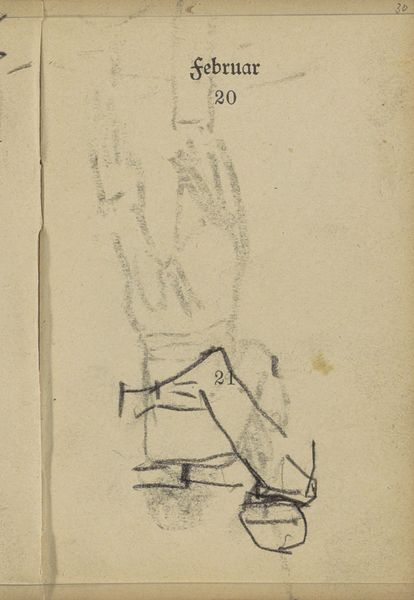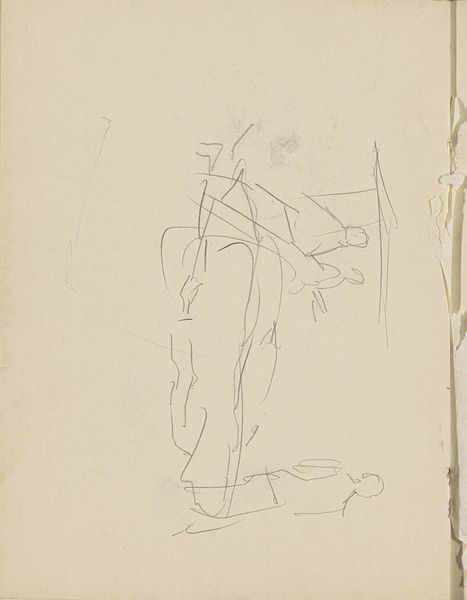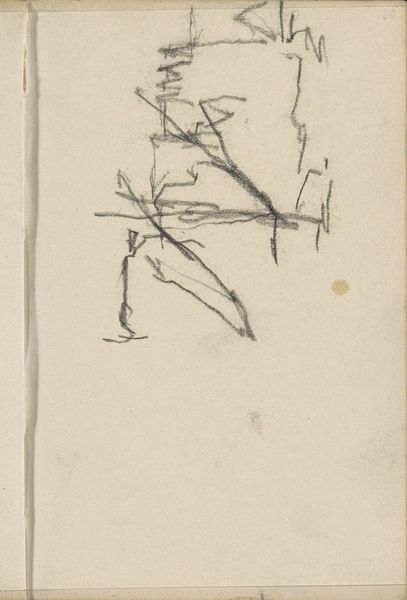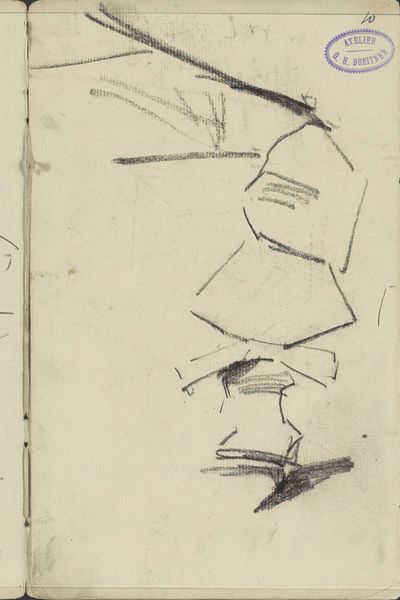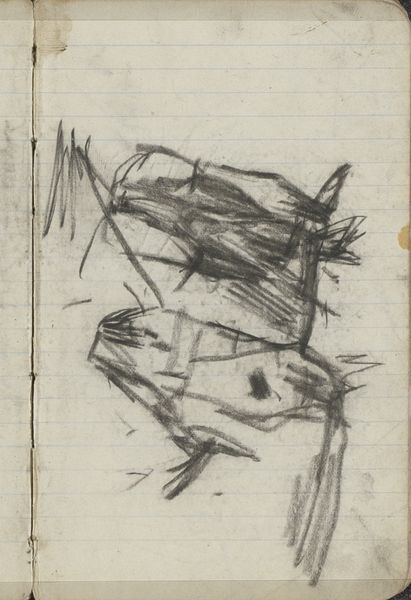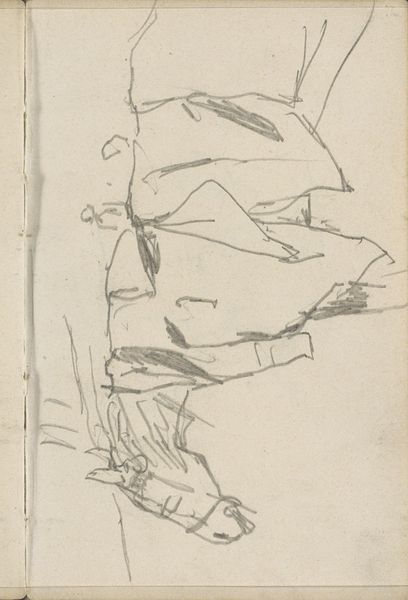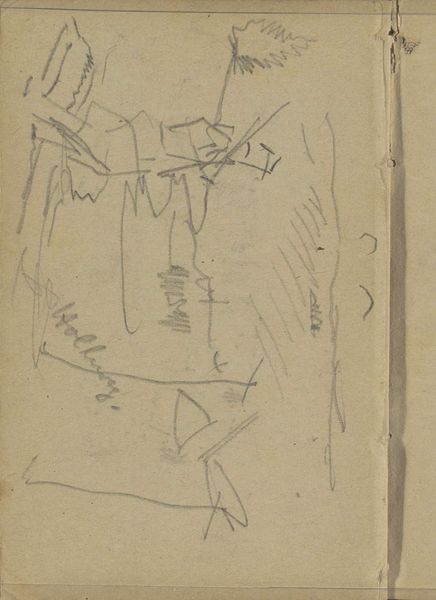
Copyright: Rijks Museum: Open Domain
Curator: What a strikingly economical drawing! The starkness and almost anxious energy jump right out. Editor: It does have an urgency. The work is entitled "Vrouw met hoed," or "Woman with a Hat," dating back to 1896 and comes to us from the hand of George Hendrik Breitner. You'll find it rendered with pencil on paper at the Rijksmuseum. Curator: Hats have been culturally loaded signifiers for centuries, conveying class, occupation, social status. To see just "hat" highlighted implies its importance—a possible projection of power? A kind of obscuring facade? Editor: I appreciate how the unfinished nature almost emphasizes the liminal space many women occupied during this era. Not quite in control of their narrative, bodies subject to male artistic interpretations, you know? Curator: Breitner’s sketch captures an ephemeral moment. This is impressionism grappling with Realism, finding tension between capturing the moment, as is, but without completely letting go of how a subject may be viewed within culture. It's such a powerful negotiation. Editor: Absolutely, and you feel that raw sketch work contributes. The woman, though sketched with relatively few lines, doesn't seem passive. Do you find an implied criticism towards society, then, using established codes ironically to expose the woman's constraints? Or is Breitner merely observant, documenting without judgement? Curator: I suspect it's a tightrope walk. His mark-making suggests less passive documentation and rather active engagement; but he remains respectful of what and whom is at hand. He certainly could have employed a more heavy handed application. It also leads us to a modern psychological view on his own impressions and experience, what would Jung say? Editor: Ultimately, I believe it captures a transitional moment, both for the sitter, and potentially for Breitner himself in coming to terms with rapidly changing societal norms that, I think, he manages to successfully document on paper here. Curator: I am fascinated at how it distills presence. It seems to ask, "What does it truly mean to capture a person?" More than photographic accuracy can ever provide. Editor: It serves as a stark reminder to consider women as active participants and how identity can be intentionally, or unintentionally misconstrued, offering many threads to unravel even in the sparsest depiction.
Comments
No comments
Be the first to comment and join the conversation on the ultimate creative platform.
